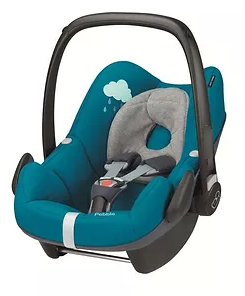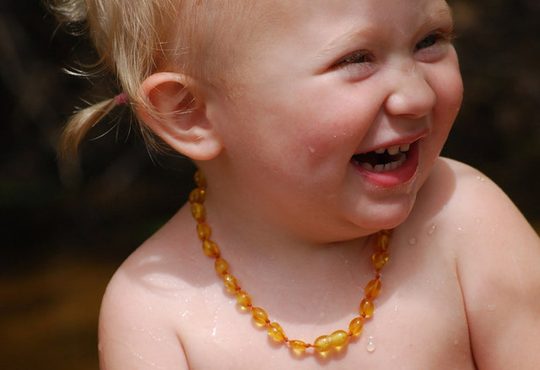
To begin
We often forget it, but these are the first car seats for your children
They have the particularity of being able to be fixed on a stroller, and thus not to wake up your child during the passage of car/stroller. This is what manufacturers often call the “ travel system ”. But during Baby’s first months, many parents are tempted to use the shell seat as a stroller constantly … remember that it is above all a car seat! They can attach directly to the vehicle with the seat belt or attach to bases that remain in the vehicle at all times. These bases are themselves fixed, either with the belt or in Isofix carrycot
-
The basket is installed horizontally on 2 seats.
-
The hull is installed exclusively rearward facing
Comfort question about carrycot
You have certainly already heard, or read, these eternal debates on the “shell” (cozy) seat and the back problems it could cause on young children … Suddenly some of you will have preferred the carrycot for reasons of comfort and practicality… For the little ones, the safest way to travel is in a rear-facing 0+ hull!
The question was put to a pediatrician: the best position for a baby is semi-recumbent (i.e. the spine and limbs relaxed but the whole body slightly tilted). The lying position, meanwhile, promotes gastric reflux.
In many countries, most of northern Europe, using a carrycot in the car is boycotted for safety reasons! Babies, therefore, travel exclusively in hulls from birth and do not have more back problems than French babies.
In the mother’s womb, the baby’s spine is completely rounded to the nape of the neck. As the following drawing (by Nicole Rudolf) shows, it will take about a year for the baby’s spine to be straightened.
The natural position of babies, rounded back, is the physiological posture.
It has various interests:
-
It protects the discs between the vertebrae which are very soft and very fragile in babies.
-
It protects the spinal cord at the nape of the neck. Care should be taken to keep the baby’s head in line with the spine.
And these ideas received on the 1h30 max and back problems?
Of course for the shells, as for the rest, it is above all necessary to avoid the excesses! We advise not to exceed 1h30, 2h in a row, after which the vertebrae need movement so as not to be compressed. But that doesn’t mean you can’t travel at 10 am!
It means that the shell is a car seat! Neither a stroller nor a deckchair and that a child should not spend 10 hours there every day. But no risk for a trip of 4 or 6 hours!
And don’t kid yourself, switching to a group 1 or 0/1 car seat doesn’t change anything! The problem remains the same, the child is confined and arnaché and will need at some point to simply stretch his muscles.
In addition to this, you need to know more about it.
So on the road, we take breaks like for mom and dad, it’s important, and above all we don’t overdo it, if occasionally the baby sleeps there 4 hours in a row before taking a break, no problem.
What a university professor of pediatric orthopedics thinks
Question: We read everywhere that it would be bad for the back of a baby under 6 months to make it travel more than x hours (the figure is never the same) in a car shell. I have the impression that this is only said in France (roughly the only country selling transport pods) and that the orthopedic patterns invoked are quite vague/fanciful. There are quite a few publications on the respiratory risk for the premise that get too packed in a too-large shell, but I do not understand the danger for the vertebrae and the back of a full-term baby traveling for several hours in a shell of his size especially if it is taken out regularly at this age for a meal or a diaper (but even if it is gone for his night) and if it is not every day … is it a rumor? That
Reply: I think the answer is to your question! I completely share your suspicions about the claims you cite. I hear the same thing being said with big nonsense about schoolbag weight stories where we go so far as to quantify body weight percentages. It goes without saying that we do not know of any deformation or other pathologies of the spine whether it is induced by the position of the child in a shell in a car, or in a relaxed chair since it is acting in roughly the same position. I have no notion that these claims are validated by any scientific work.
In any case, the spinal deformities of the child, when they are not directly related to bone dystrophy (itself related to a general pathology) are never related to a habit of a posture of the newborn or infant.
If certain deformations can be observed in children who are not very stimulated (I am thinking in particular of plagiocephaly), there really has to be, in a repetitive, daily, and prolonged manner, a fixed posture and an absence of mobilization. But, concerning the spine, I do not know of any deformation that could be attributed to this absence of stimulation, and which is not resolving once the child has acquired the sitting position or the standing position with a good axial tone.
From a safety point of view
In addition to this, you need to know more about carrycot.
The carrycot does not support the baby well enough (most only have a lap belt), and the perpendicular position is risky in the event of an impact. The baby’s head is not or is very poorly supported which is very bad for his neck. The tensions caused on the head and the chest are extremely violent.
This is why the vast majority of nacelles do not obtain good results during additional crash tests. If you want to use a carrycot, to date, only one model is part of the selection. The carrycot is the only one to have a reducer insert, combined with a new structure, a 3-point harness, and an adjustable Isofix base attachment. Its results in Security in the ADAC tests are among the best.
And how long do we use the hull for?
Forget as soon as possible this old myth of a shell that would last up to 6 to 9 months!
The shell allows you to keep your child safely rearward-facing up to approx. 13kg. 15 months (from 12 to 20 months depending on the morphology of your child).
A but you will tell me that a shell with a 10kg baby is heavy! Never mind, the shell is a car seat, let it fix in the car and use it as a car seat!
When is it time to switch from the shell to a Group 1 seat?
It is not uncommon to hear parents say that their child is starting to get too big for their seat because their legs are starting to stick out!
It is a mistake! In reality, only 3 criteria allow you to know if the shell becomes too small for your child :
-
The level of his head: as soon as the baby’s head exceeds the upper edge of the shell.
-
The maximum weight provided for the seat: as soon as your child reaches the maximum weight provided for a seat.
-
The level of the harness, which must be at shoulder level or just below!
For safety reasons, it is necessary not to move to the seat of the next group too prematurely. Do not rush into the minimum weight criterion. Do not spend your child in a group 1 when he weighs 9kg! Too premature passing the headquarters of the following category is not recommended for the safety of the child.




